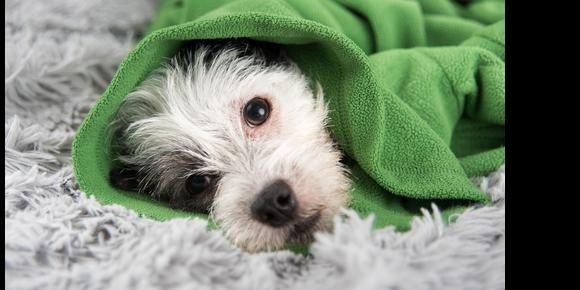
When I was 14 years old my mom finally caved in and got me my first dog. Mom had put us on the waiting list at the Toronto Humane Society for a poodle mixed with anything as my mom did not want a shedding breed in the house. When we got the call that there was a cocker spaniel poodle mix waiting to see us, I could not hurry my mom out of the house fast enough.
At the Humane Society, in the corner behind bars sat this disheveled, blonde, ungroomed, heavy set cocker spaniel with curly hair. He looked so forlorn and forgotten about. Of course, I didn’t care what he looked like I WANTED A DOG! So, we took him straight to the groomers and then home. His official name was Bob the Dog but this quickly morphed into Bobby, Booger and finally Booger Roo. He was territorial, aggressive with all males including the pizza man and post man and loyal to a fault with myself and my mom. These behaviours were all typical of an untrained, unneutered male dog that we were able to deal with throughout his life but never really able to correct.
At the age of 11 Booger Roo became acutely ill one morning. Having now worked in an animal hospital for 4 years I was aware of the signs when he started to urinate bright yellow/orange urine. He was also extremely lethargic and hardly had the energy to go for a pee that morning. I brought him to work with me right away knowing that he was likely having a hemolytic crisis.
Immune Mediated Hemolytic Anemia can come on suddenly, sometimes after vaccines or drugs are administered, sometimes after eating onions or garlic for a few days, sometimes because there is a tumour present on the spleen. In IMHA, the immune system no longer recognizes Red Blood Cells and develops antibodies to circulating RBCs, leading to RBC destruction and removal by the spleen from circulation. Diagnosis is made on a simple blood test that can be run in house counting the number of red blood cells in circulation at that moment and confirmed on a more sophisticated test specifically designed for IMHA called a Coombs Test.
Healthy animals will have red blood cells circulating in the 40% range. In Booger Roo’s case he had red blood cells at 18% and dropping. This is termed being anemic and will make you extremely lethargic when there aren’t enough red blood cells to support your circulatory system. His urine turned a bright yellow orange colour because when red blood cells are being destroyed, they release a chemical called bilirubin that changes everything orange (including your skin and whites of your eyes).
Treatment involved starting him on a high dose of corticosteroids that swiftly and effectively shut down his immune system. In some cases, they will even use chemo therapy drugs to achieve this result but fortunately for Booger he didn’t need such strong medications. Some dogs will also need to go for referral to the emergency clinics for an immediate blood transfusion. In Booger’s case, we were lucky and took him home on a medication only.
His bloodwork was closely monitored daily. The next day his red blood cell count was holding steady at 16% and remained there for 2 days. Then on the third day he started to climb back up to 21% and he progressively got stronger from there. After more than 3 weeks he had his red blood cell count back up to a robust 36% and we were now able to taper down his medication dosage. It took another 3 weeks before he could stop the medication all together. This was a scary crisis and we would have almost lost Booger Roo if it was not for my awesome doctors and support team that I work with. Thanks to the team they kept up our spirits and held my hand and Booger’s Paw as we worked together to save his life. He lived a full life and watched me grow from a teen to an adult, morphing into a Veterinary Technician and much to his chagrin, bringing home everything from injured squirrels to orphaned kittens.

